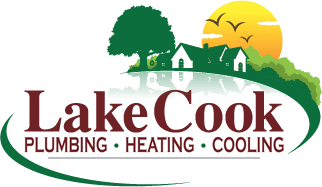10 Types of Piping Found in a Home’s Plumbing System
- Plumbing

10 Types of Piping Found in a Home’s Plumbing System
As a homeowner, you need to know what’s going on inside your walls and under your floorboards. Knowing is half the battle, as once you know, you can act, making the important repairs and installations that you need to make in order to bring your home up to your standards. Here’s what you need to know about the different types of plumbing pipes you’re likely to find in your home
1. PB (Plastic Polybutylene)
Polybutylene, or PB piping, was commonly used from the late 1970’s into the mid 1990’s. These pipes were low cost and easy to install, making them very popular, especially throughout the 1980’s.
Underground main lines are usually blue, but the pipes can also be black or gray. It’s usually about a half inch or an inch in diameter. The problem with PB is that, after so many years of use, the chlorine in tap water may cause the piping to flake and scale. PB is best replaced before it falls apart, but it does not pose an immediate danger like some other outdated plumbing materials might
2. Plastic Chlorinated Polyvinyl Chloride (CPVC)
CPVC is difficult to tell apart from PVC, and in many respects, it is functionally the same material. They are not identical, however. PVC piping will usually start to soften and weaken at the joints above 140 degrees Fahrenheit, whereas CPVC can handle temperatures exceeding 200 degrees with ease. CPVC tends to be more common in commercial building projects. CPVC is a great choice for your home, but note that you generally will not want to connect PVC to CPVC, rather, you will want to choose one or the other.
3. Acrylonitrile-butadiene-styrene (ABS)
Acrylonitrile-Butadiene-Styrene, or ABS pipes, can be identified by a dark, almost metallic appearance. They are very similar to PVC in most respects, but they tend to weather the sun poorly, so they are not recommended for outdoor application. They are known to be easier to install than PVC, and are often used as an alternative where metal piping might be considered.
4. High density polyethylene (HDPE)
Also known as alkathene or polythene, HDPE or High Density Polyethylene pipes are popular for their high strength-to-density ratio. This black, plastic piping can be used for potable water, but is more often used to distribute gas, oil, wastewater, and chemicals in industrial settings than it is used in residential housing.
5. Cross linked polyethylene (PEX)
Often used as an alternative to copper, PEX, or cross-linked Polyethylene typing, costs about a third of copper, won’t corrode, and is fast and easy to install. PEX can be identified by its bright blue or red color, and is frequently used to insulate electric wiring.
6. Polyvinyl Chloride (PVC)
Polyvinyl Chloride, or PVC, is perhaps the most popular form of piping used for plumbing in residential buildings. It is easily recognized by its white plastic appearance. If your home was built in the last ten, twenty years, then chances are that you’re looking at PVC pipes. A common replacement for metal piping, PVC is incredibly strong for its low cost, durable, and easy to install, with no real downsides to speak of
7. Copper
Copper pipes are still used in some homes. They’re fairly easy to identify: If you’ve seen copper before, imagine pipes made out of it. They do not pose any serious health risks, they tend to be durable and safe, but their inflexibility makes them difficult to install, and they are quite expensive in comparison to plastic, so they tend to be less common in new homes
8. Cast Iron
Cast iron pipes have been popular in the past as an option for distributing wastewater, pressurized gasses, oil and so on. They look just like a cast iron skillet you would use for cooking: Black, heavy, and metallic. If you have any cast iron pipes in your home, you would be advised to replace them as soon as possible. They are prone to corrosion, and, in many instances, impossible to repair and replace.
9. Stainless Steel
Stainless steel tends to have a clean, shiny metallic appearance. It may be your best bet if you insist on metallic pipes, being much more durable, but stainless steel is prone to corrosion, it’s expensive, and it’s difficult to install.
10. Galvanized steel
If you have galvanized steel pipes, have them replaced as soon as possible. Galvanized pipes are steel covered in a layer of zinc. The zinc erodes over the years, causing buildup which can completely clog your pipes. Not to mention, you’re drinking and showering in zinc, and you may wind up drinking lead, as well. Galvanized steel pipes look like normal steel, except with a chalky layer of zinc on the surface. You can identify an eroded galvanized pipe by the rusty color of the water coming out of your tap
Outdated pipes aren’t always dangerous, but they can be. PB, for instance, may fail at any given moment, but it probably won’t put you in the hospital. If you have galvanized steel pipes, replace them as soon as possible. Beyond safety concerns, the “best pipe” may simply be a matter of personal preference.
Call Lake Cook Plumbing today & start learning more about your plumbing system!
Check out our stellar Google reviews!







